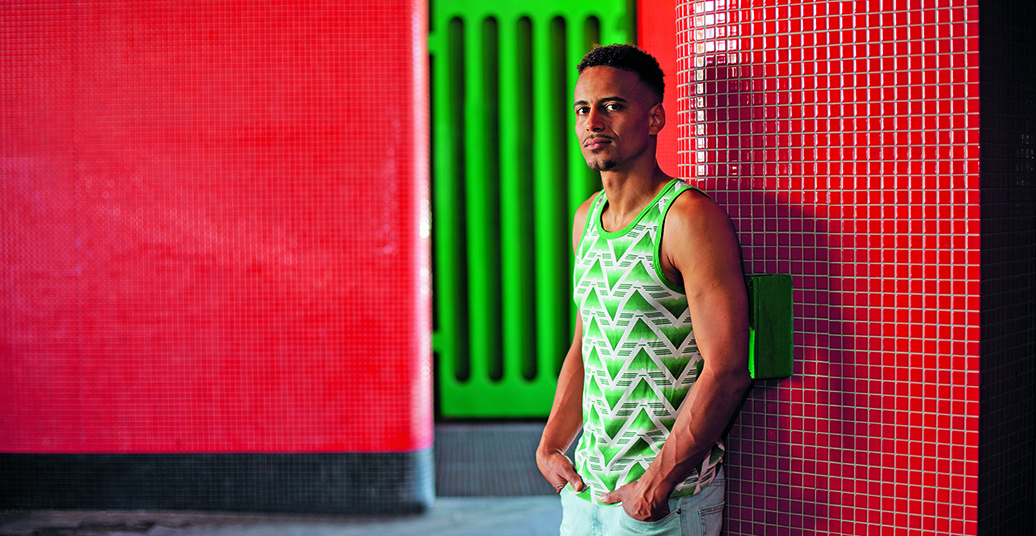In Auf meinen Schultern, premiering at Ballhaus Naunynstrasse, Raphael Hillebrand shares the story of how he navigated his brutal exclusion from society through spoken word, dance, sound, and video.
Let’s start with a question: Where are you from?
As a little boy, born in Hong Kong and raised in Berlin, Raphael Hillebrand walks into a bakery. The white owner says, “Oh, cute black boy, where are you from?” Hillebrand replies, “I’m Chinese!” Pause.
“Where are you from?” is a question that often marks one’s noticeable otherness – one’s non-belonging – in a society. It is a question that follows and troubles Hillebrand throughout his upbringing as a black person (“the N-word” as he calls it) living in Europe. As an “Asian girl” living in Europe, my interest perks. I’ve insisted on graduating from the “G-word” for a long time now, but it seems to unfailingly cling. Politics of space. ‘Girl’ takes up less room than ‘woman’, ‘woman’ less than ‘man’. Asian, black or any other additional adjective takes up less space than simply being a person, a human. In his performance, Hillebrand navigates his course of finding and taking space in a society that does not include him in its economy of space.
His sculpturally carved body moves seamlessly through the space. We hear, intimately, the sound of his breath building. The refined strength and grace in his movements reveal the poignant vulnerability under his skin. He softly and swiftly moves in and out of the floor, manifesting his skill to move gracefully with gravity, which he compares to racism. “Racism is like gravity,” he says. “It’s everywhere.” Although, Hillebrand says, he grew up to be 179 cm tall against this gravity, and he extends his arm above his head, fist clenched, declaring that he grew up to be over two metres tall against the gravity of white patriarchy. I witness in his dancing body a fluidity that moves, literally and metaphorically, in order to demand space and presence.
This body that has lived through words of rage is more honest and immediate than his animated facial expressions, his ornate way of speech, the clever, and at times, very fancy techniques on the video screen, and even than the beautiful cello soloist who accompanies him throughout the piece. “When someone makes racist remarks,” he says, “it goes through under the skin and into the bones.” During his sophisticated break dance solos, his words materialise into an ephemeral shudder that takes up space. Skin opens its pores.
I am left with a question: How does one learn to occupy space? Furthermore, after the hard work of earning space, how does one find the generosity to share it with others? The tight-knit and supportive audience seemed to be a part of Hillebrand’s community. Perhaps this was evidence that he has done this part of earning and sharing. As much of a cliché as it may sound, the answer I found is love – the unconditional love of the mother that stopped him from jumping from the balcony of his 13th floor apartment. The love for hip hop dance that imbued him with the sense of belonging that he desperately longed for. These loves appear to be the fuel that nurtured his sensitivity into creativity, transforming it into hope. This piece was dedicated to, and often addressed Hillebrand’s daughter Jara directly. At the fourth round of applause, Jara toddles across the stage angelically and I couldn’t stop myself from letting out a loud “aaaaaah” at her sweetness. The love was tangible in the air, and I felt a personal hope become a collective one.
Auf meinen Schultern – A dance performance by Raphael Hillebrand premiered on 5 September 2019 at Ballhaus Naunynstraße.




